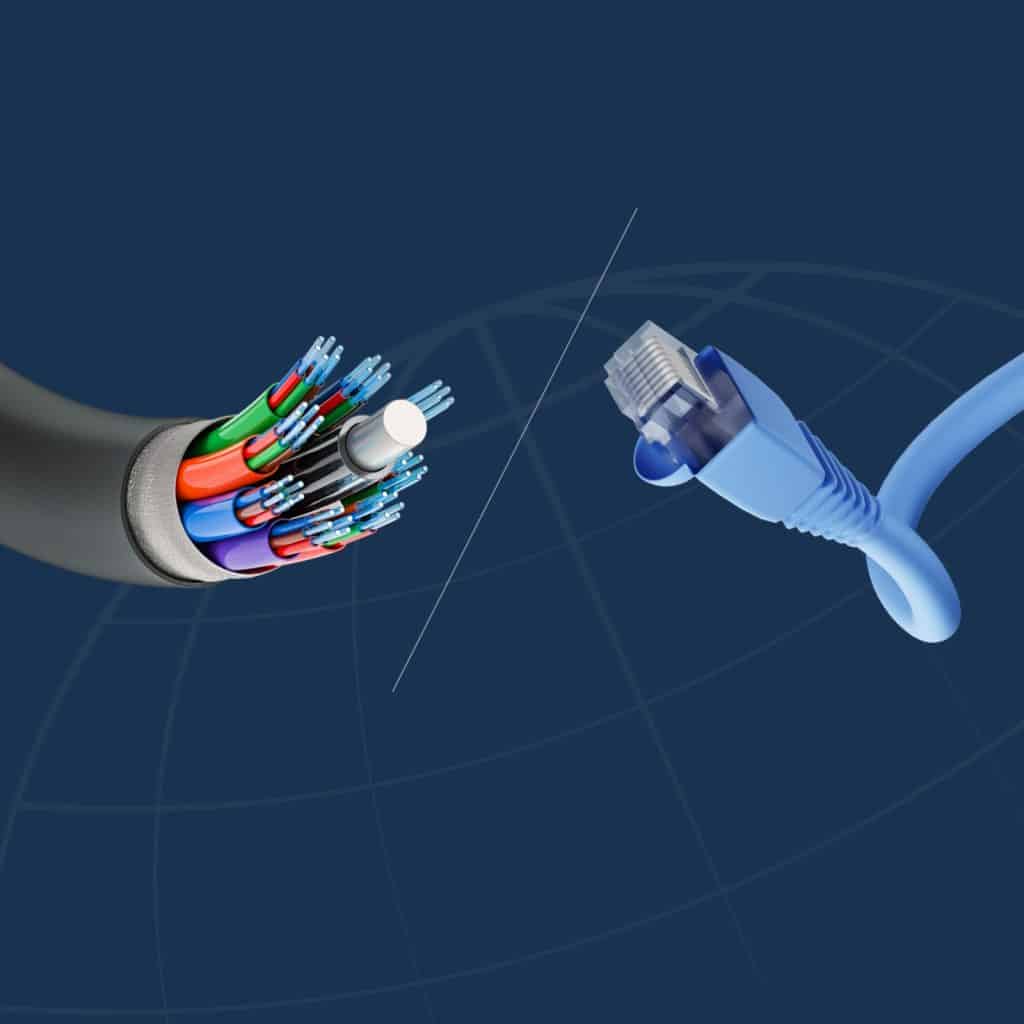As Bangladesh continues to expand its digital infrastructure, the options for broadband internet types are increasingly diverse, with fiber optic and cable internet being two of the primary choices available to consumers. Each type offers distinct advantages and drawbacks, and understanding these can help individuals and businesses make informed decisions based on their specific needs.

Fiber Optic Internet: Speed and Reliability
Fiber optic internet is known for its speed and reliability, making it a preferred choice for high-demand users:
- Speed: Fiber optic connections provide superior speeds that can easily exceed 1 Gbps for both download and upload, which is particularly beneficial for high-resolution video streaming, large file transfers, and online gaming.
- Reliability: Fiber optics are less susceptible to environmental interference and signal degradation over long distances compared to cable. This results in more stable and consistent internet service.
- Latency: Fiber optic internet typically offers lower latency compared to cable, enhancing experiences for real-time applications such as online gaming and video conferencing.
Cable Internet: Accessibility and Cost
Cable internet, using the same infrastructure as cable television, is another popular broadband option:
- Availability: Cable internet is widely available, especially in areas already served by cable TV. It uses the existing cable TV infrastructure, which makes it easy to deploy in urban and suburban areas.
- Cost: Generally, cable internet plans are less expensive than fiber optic options, making them more accessible for a larger segment of the population.
- Installation: Cable internet can be easier and quicker to install if the building is already wired for cable TV.
Comparison of Fiber Optic and Cable Internet in Bangladesh
- Coverage: While cable internet has a broader coverage area due to the extensive cable TV network, fiber optic services are rapidly expanding in urban centers and business districts in Bangladesh.
- Speed Variation: Cable internet speeds can fluctuate more than fiber optic speeds, particularly during peak usage times when more users share the same bandwidth.
- Future-Proofing: Fiber optic technology is considered more future-proof than cable. It has a higher capacity to handle upgrades for future internet needs without requiring significant changes to the core infrastructure.
Fiber optic vs cable internet speed
When comparing fibre optic and cable internet speeds, it’s essential to understand the fundamental differences in technology that affect their performance:
Fiber Optic Internet Speeds
Fiber optic technology uses light signals to transmit data over strands of glass or plastic, which is a more modern and efficient method compared to traditional cable. The advantages of fiber optic internet include:
- Higher Speeds: Fiber optic internet typically offers much faster speeds compared to cable. It can deliver speeds up to 1 Gbps (1000 Mbps) and beyond, both for downloading and uploading. This symmetrical speed capability (equal upload and download speeds) is particularly advantageous for tasks that require significant uploading, like video conferencing, uploading large files, and online gaming.
- Consistency: Unlike cable, fiber optic internet is less susceptible to speed drops during peak usage times because fiber uses a dedicated line, meaning users do not share their connection with neighbors.
- Lower Latency: Fiber connections have lower latency, which is the time it takes for data to travel from the source to the destination. Lower latency improves experiences in online gaming, video calls, and any real-time online operations.
Cable Internet Speeds
Cable internet uses the same coaxial cable network that delivers cable television. It has been around longer and is more widespread in terms of infrastructure. Cable internet’s characteristics include:
- Variable Speeds: Cable internet typically offers download speeds ranging from 10 Mbps to 500 Mbps. However, upload speeds are much lower than download speeds, often capping at 50 Mbps, which can be a significant disadvantage for uploading content.
- Shared Bandwidth: The biggest drawback of cable internet is that the bandwidth is shared among users in the same area. This means that during peak times, when many people are online, the speed can significantly decrease, affecting streaming, gaming, and downloading performances.
- Higher Latency: Cable internet generally exhibits higher latency than fiber, particularly noticeable in densely populated areas or during peak usage periods.
Making the Right Choice
The decision between fiber optic and cable internet in Bangladesh should consider the following factors:
- User Needs: For users who need high-speed, symmetric internet for uploading and downloading large amounts of data, fiber is the best choice. Cable might suffice for those with moderate internet usage.
- Location: Availability is still a critical factor. Some areas may have access to only one of these options.
- Budget: Budget constraints might lead some consumers to opt for the more economical cable internet, especially where high speeds are not critical.
Conclusion
Both fiber optic and cable internet services have their merits and are capable of meeting different user needs in Bangladesh. As the digital landscape evolves, the expansion of fiber optic networks is likely to bring more competitive speeds and prices, further enriching the choices available to consumers. The choice between fiber and cable will largely depend on individual usage patterns, budget considerations, and available infrastructure.

